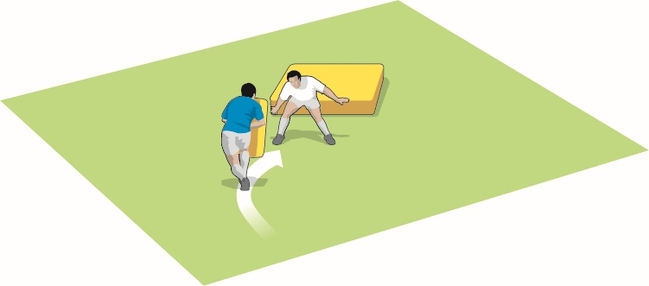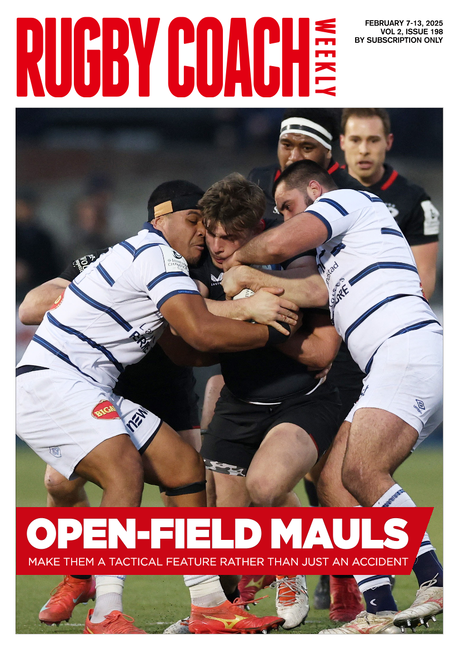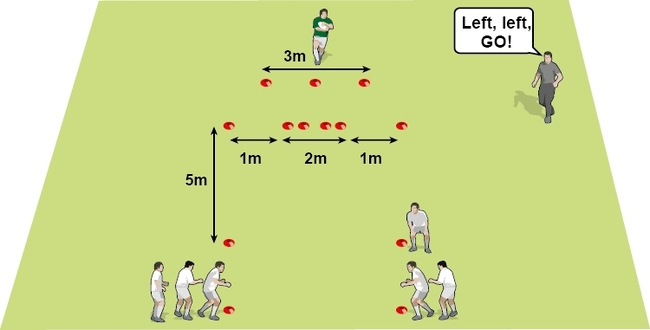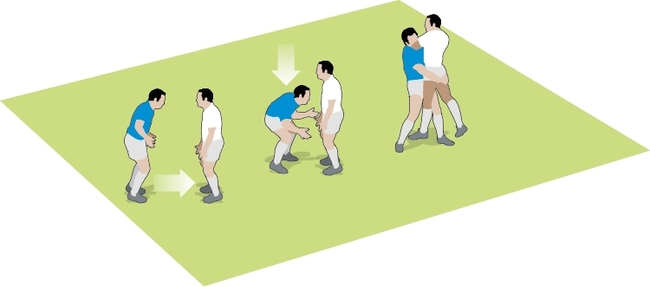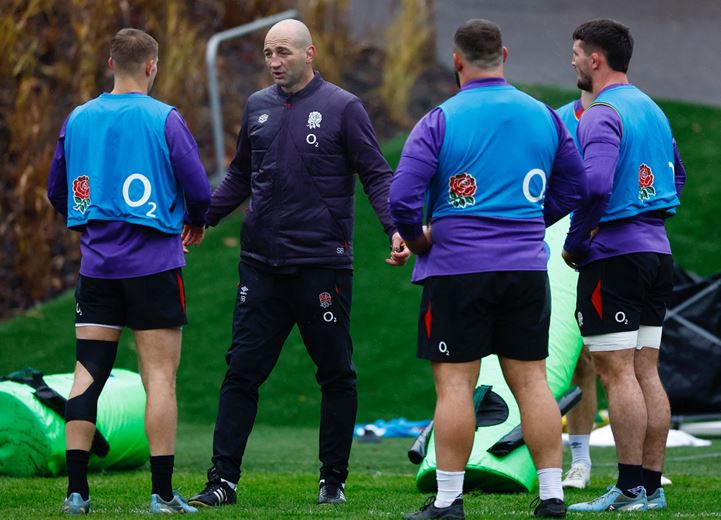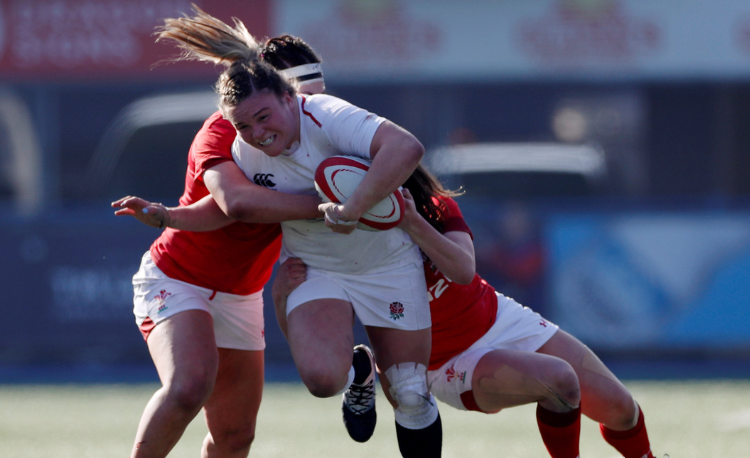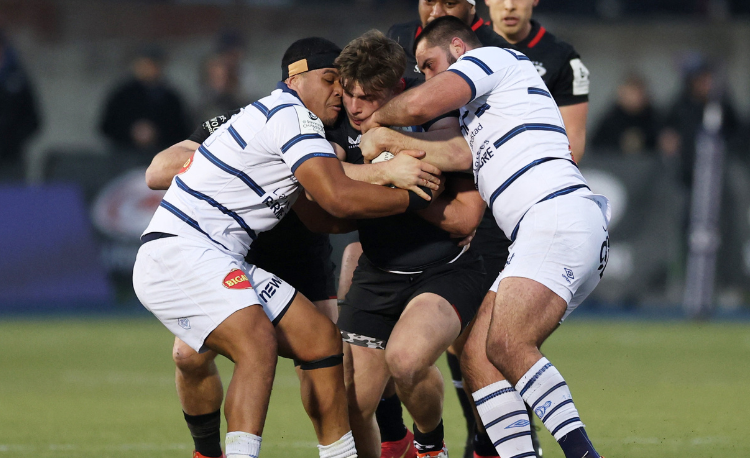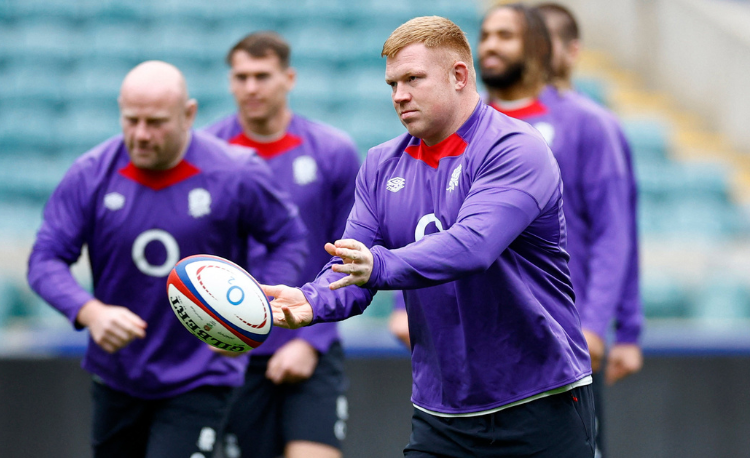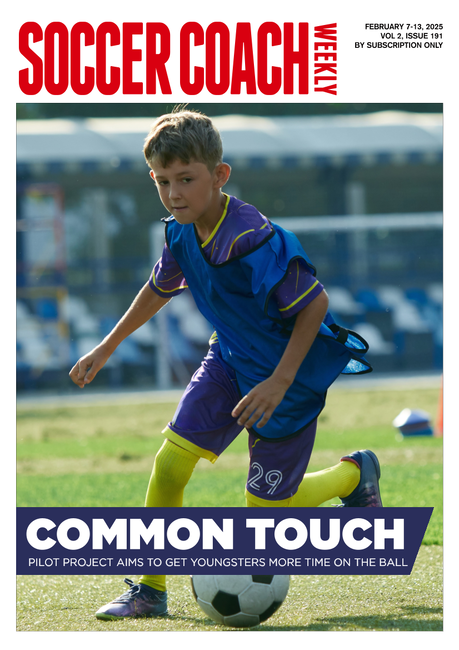Stop the power runner on the gain line
Tacklingby Sally Lark
A stationary defender will invariably lose the battle of the gain line. However, this defender can stop a powerful ball carrier who’s running directly at him by soaking up the force with a wrap tackle. Here’s how...
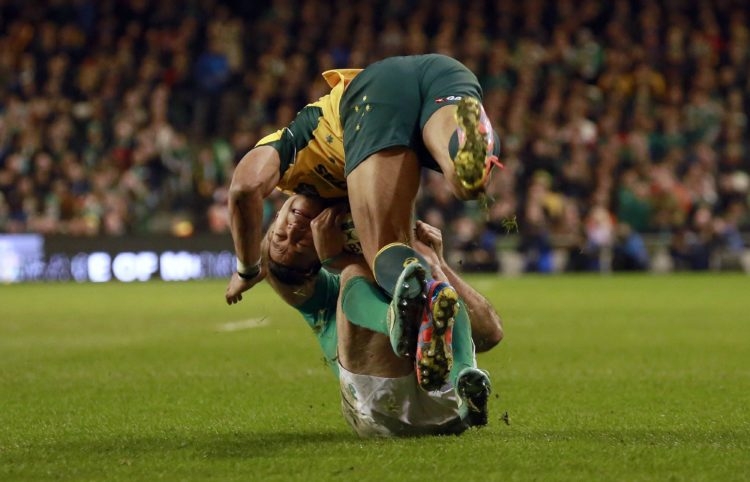
Such an outcome is based on the biomechanics of momentum involved in collisions.
The impulse-momentum relationship says that force multiplied by time is proportional to the change in momentum: Ft = mvf – mvi. That means that if two objects are moving towards each other, the momentum of one object will be changed by the momentum of the other.
As the equation demonstrates, the guy running has the momentum (m*v) advantage and the man with little or no momentum is severely disadvantaged.
The forces involved in a tackle are determined by the changes in momentum at contact. Almost all of the forces involved in a collision between a fast-running and a stationary player are applied to the stationary player.
Invariably, the ball carrier continues on his way, leaving the unfortunate tackler lying on the ground and perhaps even dazed by the experience.
Here’s how the defender could change the tackle for a more successful outcome.
The simple reason is that the longer the tackler is in contact with the ball carrier, the more he reduces the effect of the momentum.
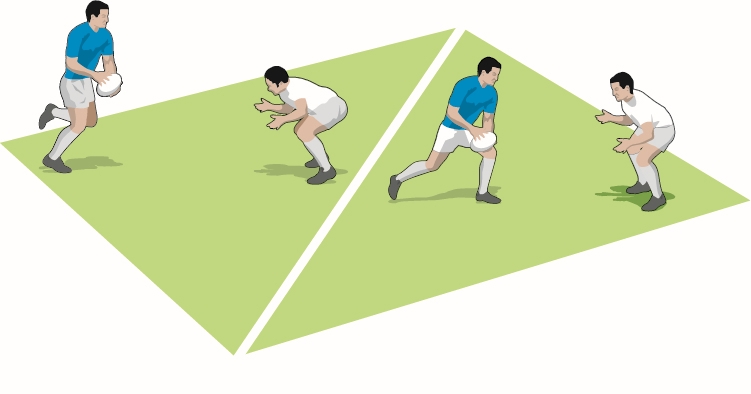
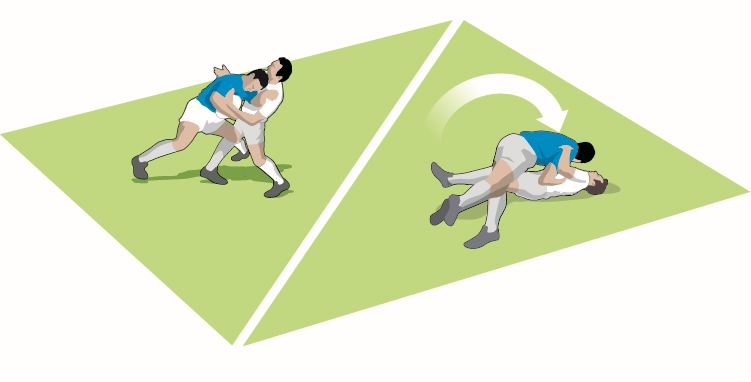
He’s now in danger of his head coming into contact with the ground and absorbing the first forces of that collision – a potential concussion scenario.
To successfully utilise this concept, the stationary defender faced by an oncoming ball carrier may choose the less forceful “wrap”, but he must twist, roll or flex on the way down to avoid head contact with the ground.
All our experience of collisions tells us that the rest of the body is perfectly capable of absorbing these forces, but the head must be protected.
For some exercises to improve this tackle, go to this page:

KEY TAKEAWAYS
- A large object moving forward will always win the collision against an equal-sized or smaller object that is stationary.
- A stationary low tackle on a fast-moving ball carrier can turn into a speed-bump. The tackler is knocked backwards.
- A wrap-up tackle soaks up the momentum and brings the ball carrier to the ground, with the ball trapped in between the two bodies.
- The tackler should stand up and wrap late. > The tackler should twist his body as he falls to prevent his head banging against the ground.
HOW IT WORKS
A big man running at a smaller player (like an 8 at a 10) often knocks the poor tackler backwards. The runner had lots of momentum, and stationary tacklers with little or no momentum were unable to stop them.Such an outcome is based on the biomechanics of momentum involved in collisions.
The impulse-momentum relationship says that force multiplied by time is proportional to the change in momentum: Ft = mvf – mvi. That means that if two objects are moving towards each other, the momentum of one object will be changed by the momentum of the other.
As the equation demonstrates, the guy running has the momentum (m*v) advantage and the man with little or no momentum is severely disadvantaged.
A SCIENTIFIC SOLUTION
In all these cases, the man trying to stop the runner was stationary and disadvantaged because he tried to tackle the runner in a traditional manner. But given our knowledge of biomechanics, another option is available – using that same impulse-momentum relationship.The forces involved in a tackle are determined by the changes in momentum at contact. Almost all of the forces involved in a collision between a fast-running and a stationary player are applied to the stationary player.
Invariably, the ball carrier continues on his way, leaving the unfortunate tackler lying on the ground and perhaps even dazed by the experience.
Here’s how the defender could change the tackle for a more successful outcome.
- He prepares to tackle the runner in the traditional manner – head on and around the hips.
- Then, at the appropriate moment, he stands up, wraps his arms about the runner and allows himself to be knocked to the ground.
The simple reason is that the longer the tackler is in contact with the ball carrier, the more he reduces the effect of the momentum.

- The ball carrier attacks the static crouched tackler at speed.
- The ball carrier dips to drive through the tackler while the tackler, at the last moment, stands a little taller.

- The tackler wraps himself around the ball carrier, putting the ball between them and holding on tight to absorb the momentum of the ball carrier.
- The tackler twists as he falls, but keeps the ball between him and the ball carrier.
TACKLING SAFELY - THE DOWNSIDE
Having wrapped up the ball carrier, the two will fall toward the ground, quite possibly with the tackler positioned to fall flat on his back.He’s now in danger of his head coming into contact with the ground and absorbing the first forces of that collision – a potential concussion scenario.
To successfully utilise this concept, the stationary defender faced by an oncoming ball carrier may choose the less forceful “wrap”, but he must twist, roll or flex on the way down to avoid head contact with the ground.
All our experience of collisions tells us that the rest of the body is perfectly capable of absorbing these forces, but the head must be protected.
For some exercises to improve this tackle, go to this page:
Related Files
stop-the-power-runner-on-the-gain-line.pdfPDF, 646 KB
Newsletter Sign Up
Coaches Testimonials

Gerald Kearney, Downtown Las Vegas Soccer Club

Paul Butler, Florida, USA

Rick Shields, Springboro, USA

Tony Green, Pierrefonds Titans, Quebec, Canada
Subscribe Today
Be a more effective, more successful rugby coach
In a recent survey 89% of subscribers said Rugby Coach Weekly makes them more confident, 91% said Rugby Coach Weekly makes them a more effective coach and 93% said Rugby Coach Weekly makes them more inspired.
Get Weekly Inspiration
All the latest techniques and approaches
Rugby Coach Weekly offers proven and easy to use rugby drills, coaching sessions, practice plans, small-sided games, warm-ups, training tips and advice.
We've been at the cutting edge of rugby coaching since we launched in 2005, creating resources for the grassroots youth coach, following best practice from around the world and insights from the professional game.
